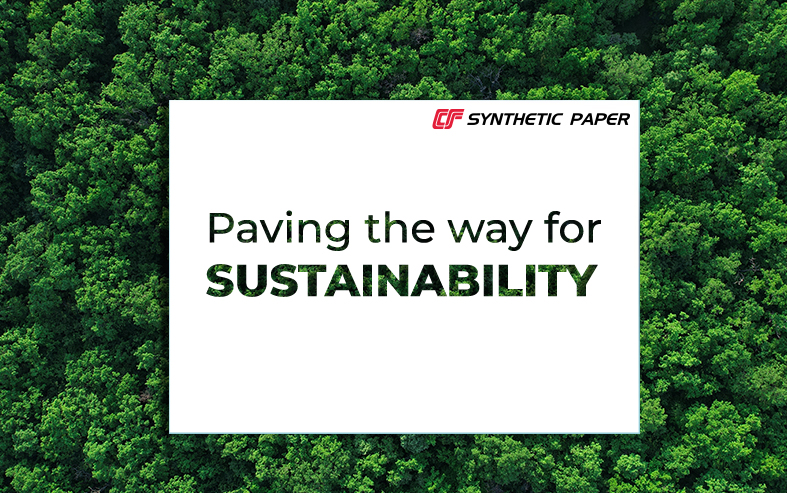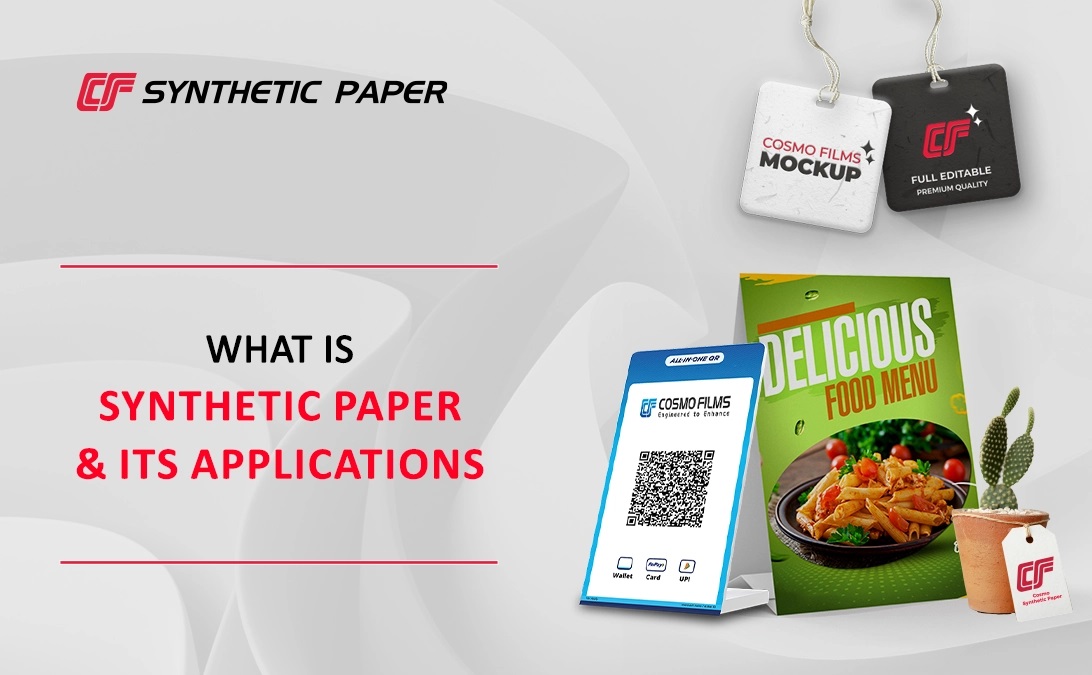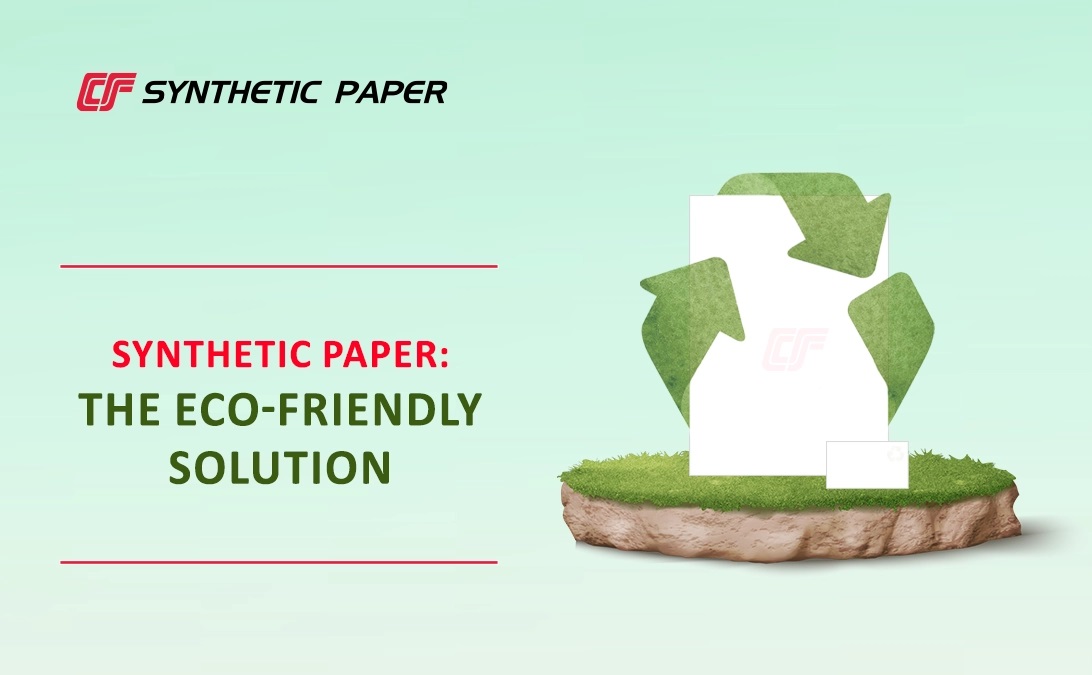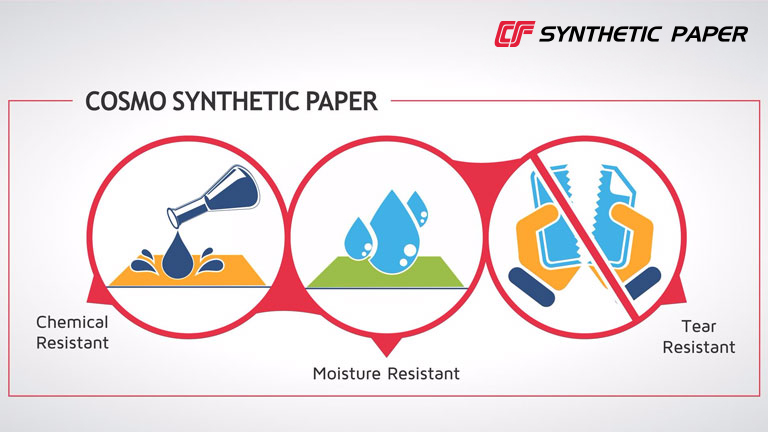On a daily basis, we exploit natural resources and use products that are not healthy for our planet. Therefore, it is important to evaluate these products' environmental impact and take steps towards a more sustainable future.
Paper is obtained from natural resources and is a major contributor to deforestation. The rise in demand for conventional paper resulted in cutting down around 4 to 8 billion trees every year. Therefore, the need to find alternatives became a priority.
One of the solutions to this problem came out to be Synthetic Paper. Synthetic paper is made using plastic - which is not a natural resource, does not require the use of trees and is RECYCLABLE!
In the year 2021, the Synthetic Paper Market was valued at USD 766 million. This is projected to reach USD 1,286 million by 2027. Let's read ahead and explore why synthetic paper is a game-changer in the quest for sustainable alternatives.
Synthetic Paper: An Extraordinary Option to Traditional Paper
Wondering what is synthetic paper? Synthetic paper is made from synthetic polymers, primarily polypropylene. The unique properties of synthetic paper include:
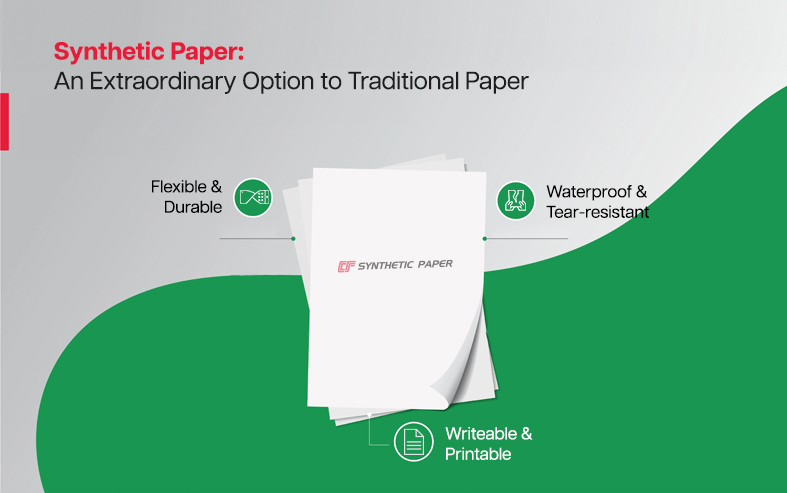
- Waterproof & Tear-resistant: The synthetic paper can withstand rough handling, spills, and moisture. This makes it ideal to be used for outdoor applications and long-lasting documents.
- Flexible & Durable: The synthetic paper resists tearing, fading, and creasing. This extends the lifespan of the application.
- Writeable & Printable: Synthetic paper can be used with most inks and toners. This is supported by high-quality printing and handwriting.
Why Choose Synthetic Paper: Toll of Traditional Paper on The Environment
In order to understand the need to shift to an alternative to traditional paper, it is crucial to learn about the environmental impact of conventional paper production.
The manufacturing process of conventional paper involves cutting down trees, which leads to deforestation. Also, the bleaching and pulping processes use considerable amounts of energy and water, which results in carbon emission and water pollution, respectively.
Enters Synthetic Paper - a compelling alternative to conventional paper. This non tearable paper is revolutionizing various industries while safeguarding our environment.
But how? Continue reading to know!
How Synthetic Paper Is a Sustainable Choice
Traditional paper carries a hefty burden of depleting the natural resources on its back. Synthetic paper offers a paradigm shift that supports greener choices. Here are some ways in which synthetic paper makes it to the list of sustainable choices.
- Contributing to the Fight Against Deforestation:
Conventional paper is made using wood pulp. The demand for conventional paper must be reduced as trees play a pivotal role in carbon sequestration and biodiversity conservation.
Using synthetic paper addresses this essential environmental concern - deforestation. It is a tree-free alternative, which helps mitigate the adverse effects of deforestation on the climate and the ecosystem.
- Water-Secure Future Through Conservation
Manufacturing conventional paper requires vast amounts of water, which often leads to water pollution as chemicals are discharged during the process.
Synthetic paper manufacturing requires less water, which results in conserving precious resources and minimizing the environmental impact of wastewater discharge.
- A Holistic Approach to Reduce Environmental Footprints
The manufacturing process of conventional paper involves multiple stages - such as logging, pulping, bleaching, and drying. These stages consume significant number of natural resources - such as water, energy and chemicals.
On the other hand, synthetic paper requires fewer consumption resources than traditional paper and has a better-streamlined process, which helps lower the considerable amount of environmental footprint. Also, during the manufacturing of synthetic paper, there are fewer greenhouse gas emissions than conventional paper production.
- The Paper That Stands the Test of Time
Conventional paper tears easily or gets stained/spoiled by water, oil, or chemicals, resulting in loss of further use of it in the future.
Synthetic paper is resistant to water, tear, oil, and chemicals compared to traditional paper, ensuring a long-lasting lifespan and reducing the need for replacement. This ultimately contributes to resource conservation, aligning with the principles of sustainability.
- The Fully Recyclable Synthetic Paper
Conventional paper has limitations in terms of the times it can be recycled.
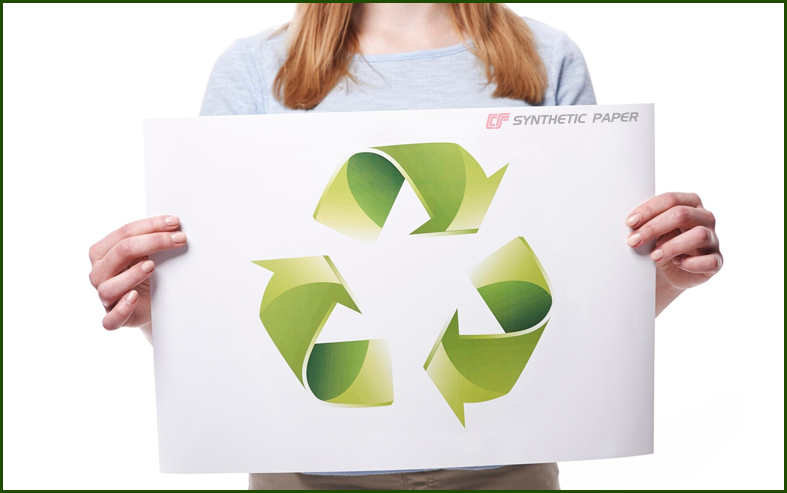
Synthetic paper is made using polypropylene, a recyclable material, unlike conventional paper. On the other hand, synthetic paper can be repeatedly recycled without significantly losing its quality. As this polyester paper is recyclable, the demand for raw materials is reduced significantly. Also, the environmental impact associated with harvesting trees for pulp is minimized.
Synthetic paper is a promising alternative to conventional paper as it has the potential to address the environmental concerns that are needed. The synthetic paper is tear resistant paper, water resistant Paper, and recyclable Paper, which makes it a more sustainable choice. As the demand for synthetic paper increases, the impact of conventional paper production on the environment decreases.
We have one planet, and we all must do our part to spread green by supporting sustainable choices. Using Cosmo Synthetic Paper, one of the top synthetic paper manufacturers, we can collectively take a step toward a more sustainable relationship with our planet.



